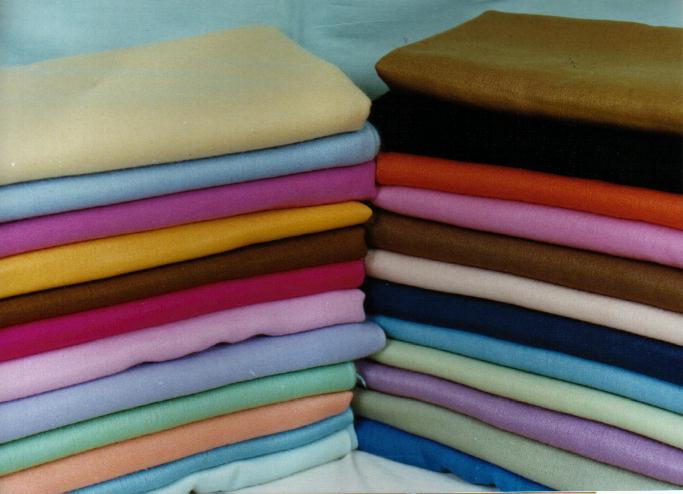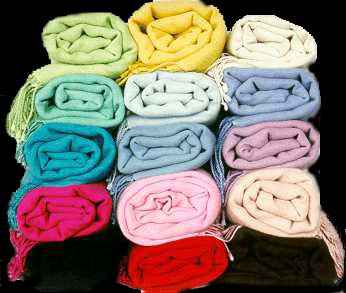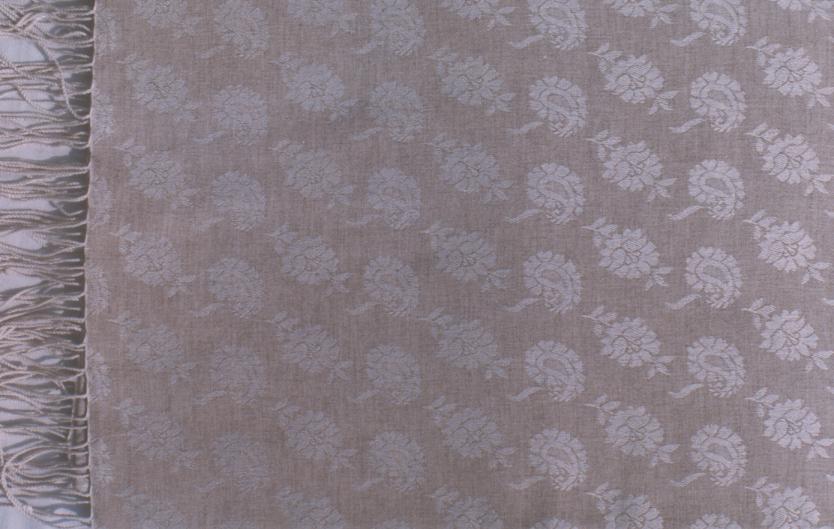




PASHM is actually the
ancient Persian word for wool. But today it has become the name of the
VERY BEST cashmere in the world- Pashmina.
The value of Pashmina lies in the fact that it is the best and finest cashmere in the world. It is the warmest, softest and lightest of the cashmeres. Accessories made from Pashmina are convenient because of their great warmth and compact size when folded.
PASHMINA can only come from goats raised in the Himalayan mountain region. The Himalayan goats produce such exquisite wool because of the elevation at which they live. It is an interesting occurrence in Nature, that the animals which live at higher elevations have much finer and more delicate fiber coverings. These fine fibers, which are protected by coarser exterior hair, are in fact the greatest insulators one can find.
The Capra Hircus goat which is the source of Pashmina lives at elevations of 14,500 feet (4,500 meters) and above, where temperatures rarely rise above minus 20 degrees Fahrenheit (minus 30 degrees centigrade) in winter. Studies have shown that goats living at lower elevations are not able to produce the extremely fine fibers that make Pashmina the unique product it is.
PASHMINA is the goat's soft underbelly down, which lies under the coarse outer hair. The diameter of a Pashmina fiber is about five times smaller than a human hair. Each goat produces only about 3 ounces or 90 grams of Pashmina wool each year. One woven Pashmina shawl requires the wool from three goats.
The goats shed each Spring and the Pashmina fibers are collected either from the rocks and bushes or is brushed from the underbelly.NO HARM COMES TO THE GOATS IN THE COLLECTION OF THE PASHMINA WOOL.
The fibers are then sorted, cleaned and spun into Pashmina yarn. It then becomes the task of master weavers, using the skills passed down to them through generations, to weave our beautiful hand-made accessories.
Woven Pashmina garments are then individually dyed and dried. Practically any color imaginable can be achieved. The buyers from PASHMINA-PLUS select the colours and weaves that are sure to delight you.
The ultimate indulgence is a 100% Pure Pashmina garment. Such a garment is delightful to touch, is a great insulator, is fashionable and is expensive.
But the most popular form of Pashmina is called PASHMINA SILK. It is a blend of approximately 70% Pashmina and 30% Silk. This blend is preferred by fashionable customers because silk adds strength and shine to the garment. In Pashmina Silk, the threads strung on the loom (warp) are silk. Pashmina yarn is used to weave across the silk threads. In technical weaver's language, the Pashmina threads are the weft, which is the name of the yarn that is threaded across the warp.
Pashmina is hand-woven into
three different sizes:
SHAWL: 36 inches
x 80 inches ; 90cm x 200 cm
STOLE: 28 inches
x 78 inches ; 72 cm x 198 cm
SCARF: 12 inches
x 60 inches ; 30 cm x 150 cm
Now that you know about the subject of Pashmina, CLICK to E-mail us about your requirement.
We are manufactures and exporters of all sorts of Pashmina Products.

V.I. Trade International
Ram Shah Path, G.P.O. Box 2423,
Kathmandu, Nepal
|